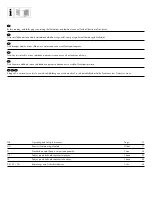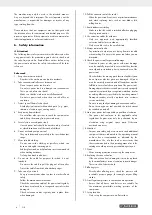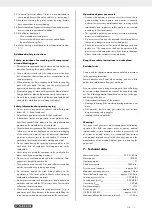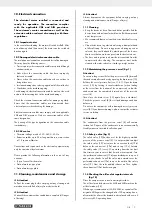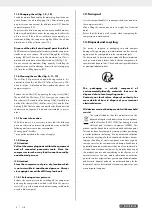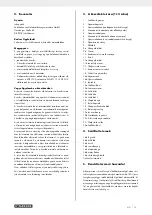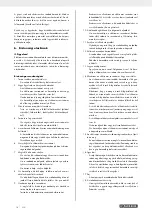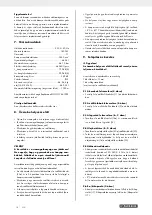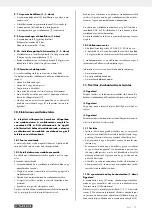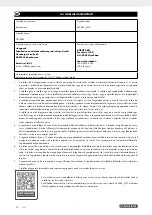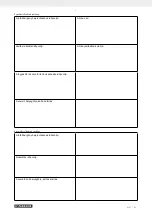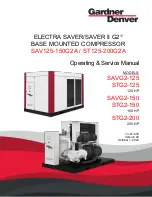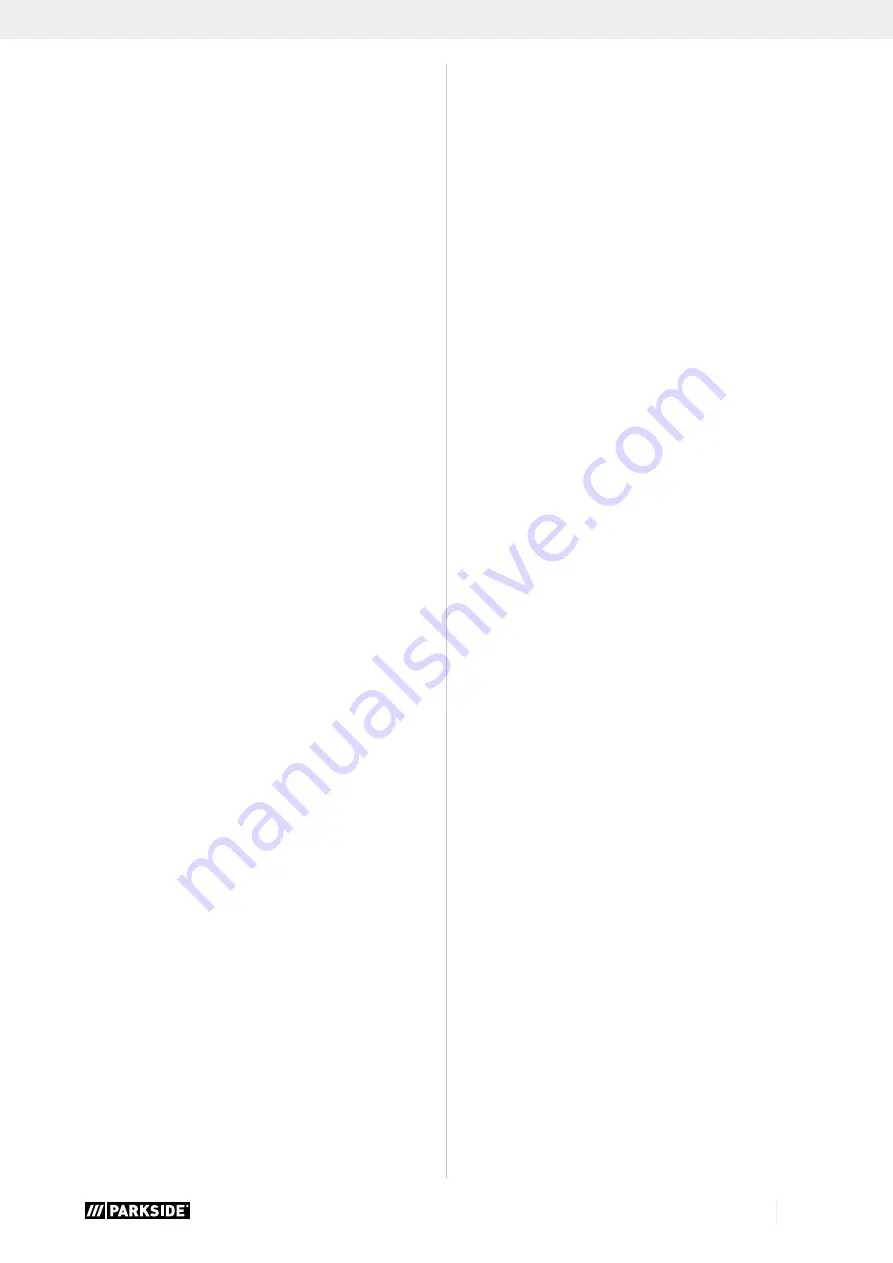
7
GB
10. Electrical connection
The electrical motor installed is connected and
ready for operation. The connection complies
with the applicable VDE and DIN provisions.
The customer’s mains connection as well as the
extension cable used must also comply with these
regulations.
10.1 Important notes
In the event of overloading, the motor will switch itself off. After
a cool-down period (time varies) the motor can be switched
back on again.
10.2 Damaged electrical connection cable
The insulation on electrical connection cables is often damaged.
This may have the following causes:
• Pressure points, where connection cables are passed through
windows or doors.
• Kinks where the connection cable has been improperly
fastened or routed.
• Places where the connection cables have been cut due to
being driven over.
• Insulation damage due to being ripped out of the wall outlet.
• Cracks due to the insulation ageing.
Such damaged electrical connection cables must not be used
and are life-threatening due to the insulation damage.
Check the electrical connection cables for damage regularly.
Ensure that the connection cables are disconnected from
electrical power when checking for damage.
Electrical connection cables must comply with the applicable
VDE and DIN provisions. Only use connection cables of the
same designation.
The printing of the type designation on the connection cable
is mandatory.
10.3 AC motor
• The mains voltage must be 220 - 240 V∼ 50 Hz.
• Extension cables up to 25 m long must have a cross-section
of 1.5 square millimetres.
Connections and repair work on the electrical equipment may
only be carried out by electricians.
Please provide the following information in the event of any
enquiries:
• Type of current for the motor
• Data of machine type plate
• Data of motor type plate
11. Cleaning, maintenance and storage
m
Attention!
Pull out the mains plug before carrying out any cleaning and
maintenance work! Risk of injury from electric shock!
m
Attention!
Wait until the equipment has cooled down completely! Danger
of burning!
m
Attention!
Always depressurise the equipment before carrying out any
cleaning and maintenance work! Danger of injury!
11.1 Cleaning
• Keep the device as free of dust and dirt as possible. Rub the
device clean with a clean cloth or blow it off with compressed
air at low pressure.
• We recommend that you clean the device directly after every
use.
• Clean the device at regular intervals using a damp cloth and
a little soft soap. Do not use aggressive cleaning agents or
solvents; they could attack the plastic parts of the device.
Make sure that no water can penetrate the device interior.
• The hose and injection tools must be disconnected from the
compressor before cleaning. The compressor must not be
cleaned with water, solvents or similar. gereinigt werden.
11.2 Maintaining the pressure vessel (fig. 1)
Attention!
To ensure a long service life for the pressure vessel (8), drain off
the condensate after each use by opening the drain screw (10).
Release the vessel pressure first (see 11.8.1). Open the drain
screw (10) by turning it counterclockwise (when looking
at the screw from the bottom of the compressor) so that the
condensate can be completely drained out of the pressure
vessel (8).
Then close the drain screw (10) again (turn it clockwise).
Check the pressure vessel (8) for rust and damage each time
before use.
Do not use the compressor with a damaged or rusty pressure
vessel (8). If you discover damage, please contact the customer
service workshop.
m
Attention!
The condensate from the pressure vessel (8) will contain
residual oil. Dispose of the condensate in an environmentally
friendly manner at a suitable collection point.
11.3 Safety valve (fig. 3)
The safety valve (19) has been set for the highest permitted
pressure of the pressure vessel (8). It is not permitted to adjust
the safety valve (19) or remove the connection lock (19b)
between the exhaust nut (19a) and its cap (19c). Actuate
the safety valve (19) every 30 operating hours but at least
three times a year to ensure that it works when required. Turn
the perforated exhaust nut (19a) counterclockwise to open it
and use your hands to pull the valve rod outwards over the
perforated exhaust nut (19a) to open the outlet of the safety
valve (19). Now, the valve audibly releases air. Then, tighten
the exhaust nut (19a) clockwise again.
11.4 Checking the oil level at regular intervals
(fig. 10)
Place the compressor on a level and straight surface.
The oil level must be between the MAX and MIN marks on the
oil-level window (18).
Oil change: recommended oil: SAE 15W 40 or equivalent. The
original oil filling must be changed after 100 operating hours;
afterwards the oil must be drained and replaced with new oil
after every 500 operating hours.
Summary of Contents for PKO 24 B2
Page 4: ...6 15a 12 15e 15c 15d 7 15 9 20 16 10 18 11 A 15d 15b 15e 8 20a ...
Page 66: ...62 ...
Page 68: ...64 ...
Page 69: ......
Page 71: ......


